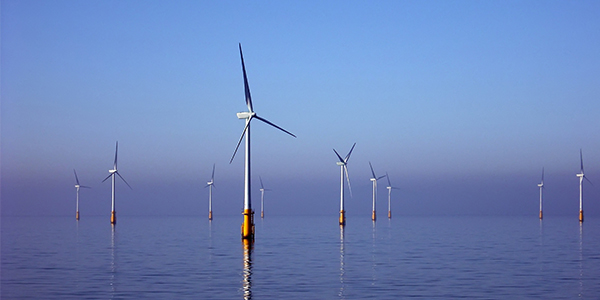PJM and state officials seeking the most efficient way to integrate more than 12 GW of offshore wind generation have identified six scenarios for analysis in a study expected to produce results after mid-2021, the RTO told the Transmission Expansion Advisory Committee Wednesday.
The Offshore Transmission Study Group, which was created in response to a request by the Organization of PJM States Inc., developed the scenarios during five meetings since October 2020, Matthew Bernstein, PJM analyst for state policy solutions, told the TEAC. PJM staff also held one-on-one meetings with individual states, he said.
The scenarios will consider the magnitude, points of interconnection and timing of OSW injections for both announced and planned projects. The analyses will also consider the impact of generator deactivations and states’ clean energy goals, Bernstein said.
PJM may study additional scenarios based on the initial study findings and feedback from the states, he continued.
Within PJM, New Jersey (6.4 GW), Virginia (5.2 GW) and Maryland (1.2 GW) have announced OSW goals.
Bernstein said the analyses are directed at upgrades that will be necessary for the onshore system and will not consider offshore infrastructure such as a mesh network grid or collector stations.
“We’re looking at what these different offshore wind injections are going to do to the onshore system,” Bernstein said. “We’re still in the process of developing these scenarios and have not begun the actual analysis itself.”
Stakeholder Questions

Theodore Paradise, senior vice president of transmission strategy for Anbaric Development Partners, asked how the modeling efforts relate to the New Jersey Board of Public Utilities’ request in November that PJM integrate the state’s OSW goals into the RTO’s Regional Transmission Expansion Plan. New Jersey’s request made it the first state to embrace the state agreement approach under FERC Order 1000, which allows states to fund transmission projects needed to meet public policy needs.
PJM expects to open a competitive solicitation window including New Jersey’s request in the first quarter of 2021. (See NJ Asks PJM to Seek Bids for OSW Tx.)
Bernstein said the assumptions and analysis of the onshore component developed in response to New Jersey’s request will be incorporated into the study.
“You can look at this as incorporating the other states’ offshore wind objectives around what we’ve already done with New Jersey as part of a larger collaborative effort,” he said.
Sharon Segner, vice president of LS Power, said the goal of having a more active public policy planning process is “really encouraging.” Segner asked if PJM anticipates the scenarios will be made public before the results are produced.
Bernstein said it is “too early” to tell what will be made available to stakeholders and when. He said the scenarios will be described in the final report.
Segner said PJM’s presentation made it seem as if the RTO was attempting to identify regional transmission solutions to accommodate states’ OSW goals. She said typically in these types of scenarios, each would be put into the planning windows and the parties would be developing and proposing regional transmission solutions.
“I’m not completely understanding how this fits into the process,” Segner said. “It sounds like an interesting development, but I’m just trying to put the pieces together.”
Mark Sims, PJM’s manager of infrastructure coordination, said Segner was jumping a bit too far ahead in the process. Sims said there’s still education that needs to be completed on the issue before PJM decides how to implement the potential solutions a state decides to move forward with.
Sims said the goal is to identify what the states want to accomplish, develop assumptions, run the studies and give information on possible results.
“If any state or group of states decides to move forward, we envision that’s when the competitive process would play a role,” he said.



